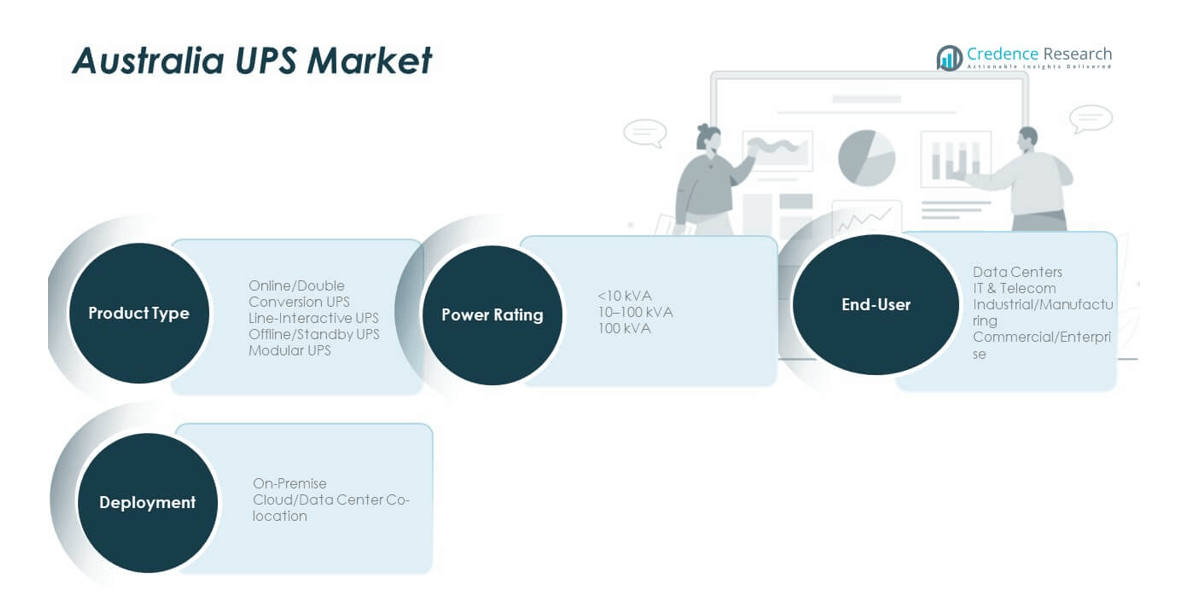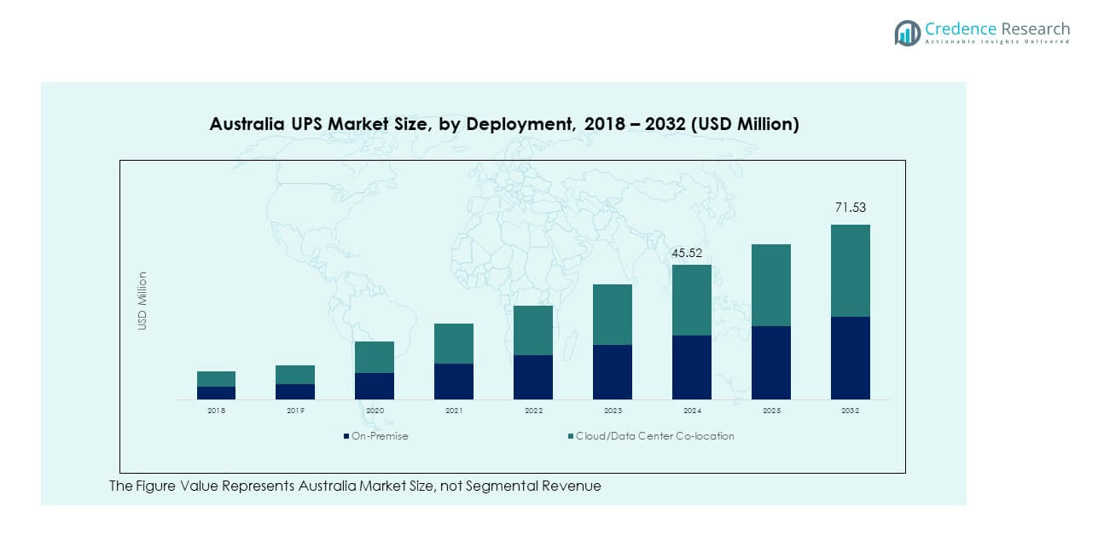CHAPTER NO. 1 : INTRODUCTION 22
1.1. Report Description 22
Purpose of the Report 22
USP & Key Offerings 22
1.2. Key Benefits for Stakeholders 23
1.3. Target Audience 23
CHAPTER NO. 2 : EXECUTIVE SUMMARY 24
CHAPTER NO. 3 : AUSTRALIA UPS MARKET FORCES & INDUSTRY PULSE 26
3.1. Foundations of Change – Market Overview 26
3.2. Catalysts of Expansion – Key Market Drivers 28
3.3. Momentum Boosters – Growth Triggers 29
3.4. Innovation Fuel – Disruptive Technologies 29
3.5. Headwinds & Crosswinds – Market Restraints 30
3.6. Regulatory Tides – Compliance Challenges 31
3.7. Economic Frictions – Inflationary Pressures 31
3.8. Untapped Horizons – Growth Potential & Opportunities and Strategic Navigation – Industry Frameworks 32
3.9. Market Equilibrium – Porter’s Five Forces 33
3.10. Macro Forces – PESTEL Breakdown 35
3.11. Buying Criteria 37
CHAPTER NO. 4 : COMPETITION ANALYSIS 38
4.1. Company Market Share Analysis 38
4.1.1. Australia UPS Market Company Volume Market Share 38
4.1.2. Australia UPS Market Company Revenue Market Share 40
4.2. Strategic Developments 42
4.2.1. Acquisitions & Mergers 42
4.2.2. New Product Type Launch 43
4.2.3. Agreements & Collaborations 44
4.3. Competitive Dashboard 45
4.4. Company Assessment Metrics, 2024 46
CHAPTER NO. 5 : AUSTRALIA MARKET ANALYSIS, INSIGHTS & FORECAST, BY PRODUCT TYPE 47
CHAPTER NO. 6 : AUSTRALIA MARKET ANALYSIS, INSIGHTS & FORECAST, BY POWER RATING 52
CHAPTER NO. 7 : AUSTRALIA MARKET ANALYSIS, INSIGHTS & FORECAST, BY END-USER 57
CHAPTER NO. 8 : AUSTRALIA MARKET ANALYSIS, INSIGHTS & FORECAST, BY DEPLOYMENT 62
CHAPTER NO. 9 : COMPANY PROFILE 67
9.1. Legrand 67
9.2. Schneider Electric 70
9.3. APC by Schneider Electric 70
9.4. Eaton 70
9.5. Vertiv 70
9.6. Company 6 70
9.7. Company 7 70
9.8. Company 8 70
9.9. Company 9 70
9.10. Company 10 70
9.11. Company 11 70
9.12. Company 12 70
9.13. Company 13 70
9.14. Company 14 70
List of Figures
FIG NO. 1. Australia UPS Market Revenue Share, By Product Type, 2024 & 2032 47
FIG NO. 2. Market Attractiveness Analysis, By Product Type 48
FIG NO. 3. Incremental Revenue Growth Opportunity by Product Type, 2024 – 2032 49
FIG NO. 4. Australia UPS Market Revenue Share, By Power Rating, 2024 & 2032 52
FIG NO. 5. Market Attractiveness Analysis, By Power Rating 53
FIG NO. 6. Incremental Revenue Growth Opportunity by Power Rating, 2024 – 2032 54
FIG NO. 7. Australia UPS Market Revenue Share, By End-user, 2024 & 2032 57
FIG NO. 8. Market Attractiveness Analysis, By End-user 58
FIG NO. 9. Incremental Revenue Growth Opportunity by End-user, 2024 – 2032 59
FIG NO. 10. Australia UPS Market Revenue Share, By Deployment, 2024 & 2032 62
FIG NO. 11. Market Attractiveness Analysis, By Deployment 63
FIG NO. 12. Incremental Revenue Growth Opportunity by Deployment, 2024 – 2032 64
List of Tables
TABLE NO. 1. : Australia UPS Market Revenue, By Product Type, 2018 – 2024 (USD Million) 50
TABLE NO. 2. : Australia UPS Market Revenue, By Product Type, 2025 – 2032 (USD Million) 50
TABLE NO. 3. : Australia UPS Market Volume, By Product Type, 2018 – 2024 (Units) 51
TABLE NO. 4. : Australia UPS Market Volume, By Product Type, 2025 – 2032 (Units) 51
TABLE NO. 5. : Australia UPS Market Revenue, By Power Rating, 2018 – 2024 (USD Million) 55
TABLE NO. 6. : Australia UPS Market Revenue, By Power Rating, 2025 – 2032 (USD Million) 55
TABLE NO. 7. : Australia UPS Market Volume, By Power Rating, 2018 – 2024 (Units) 56
TABLE NO. 8. : Australia UPS Market Volume, By Power Rating, 2025 – 2032 (Units) 56
TABLE NO. 9. : Australia UPS Market Revenue, By End-user, 2018 – 2024 (USD Million) 60
TABLE NO. 10. : Australia UPS Market Revenue, By End-user, 2025 – 2032 (USD Million) 60
TABLE NO. 11. : Australia UPS Market Volume, By End-user, 2018 – 2024 (Units) 61
TABLE NO. 12. : Australia UPS Market Volume, By End-user, 2025 – 2032 (Units) 61
TABLE NO. 13. : Australia UPS Market Revenue, By Deployment, 2018 – 2024 (USD Million) 65
TABLE NO. 14. : Australia UPS Market Revenue, By Deployment, 2025 – 2032 (USD Million) 65
TABLE NO. 15. : Australia UPS Market Volume, By Deployment, 2018 – 2024 (Units) 66
TABLE NO. 16. : Australia UPS Market Volume, By Deployment, 2025 – 2032 (Units) 66










